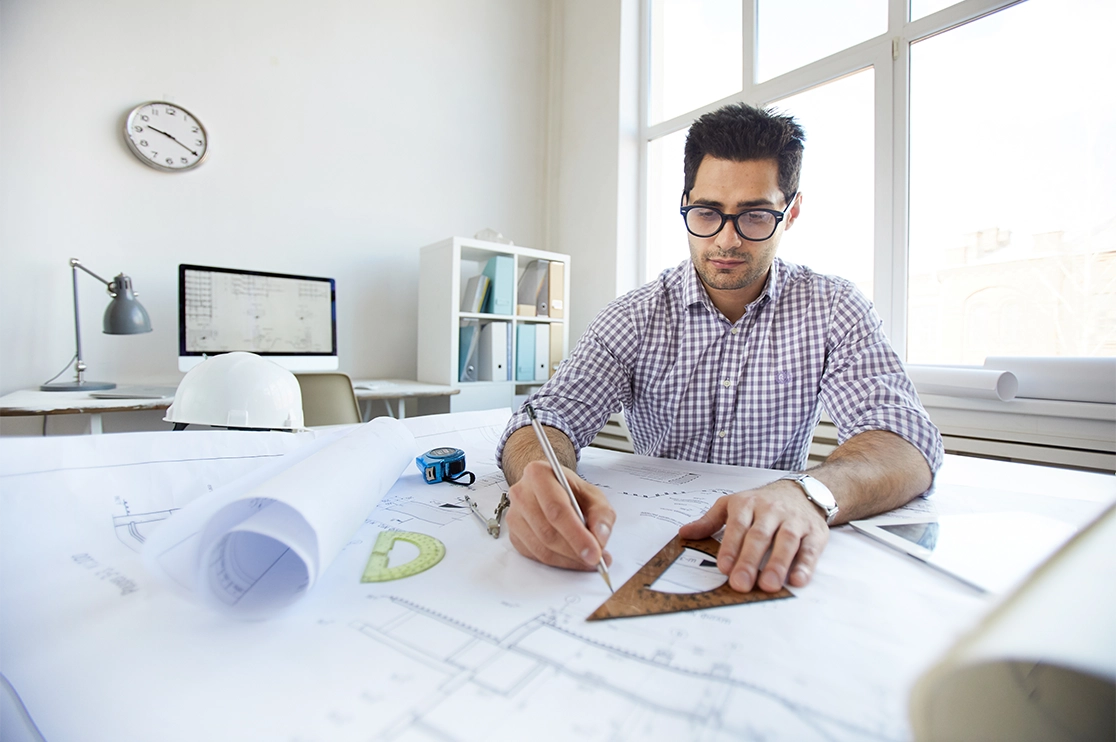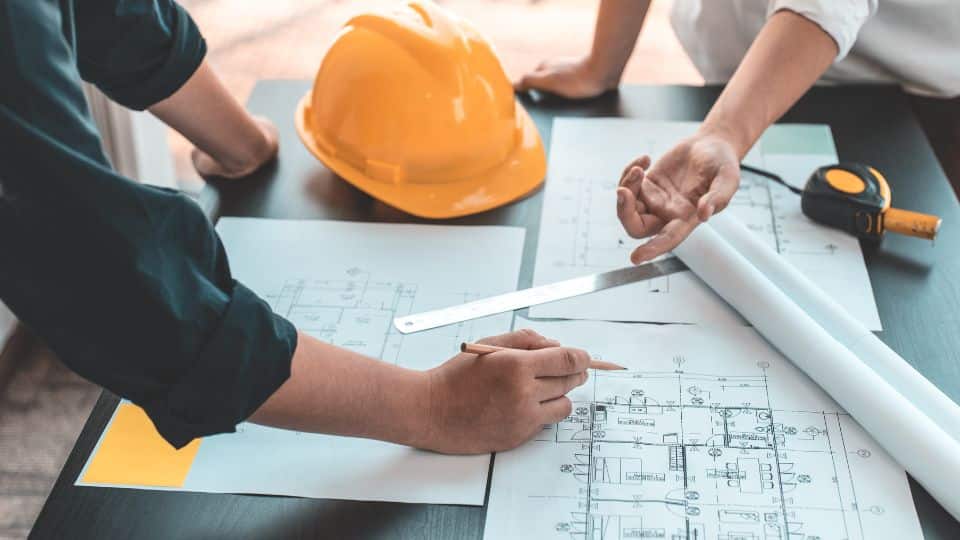Architect Services Clarified: What to Expect from Start to Finish
Architect Services Clarified: What to Expect from Start to Finish
Blog Article
Understanding the Diverse Job Paths Available for Aspiring Architect
As a hopeful Architect, you have a world of career paths waiting on you. Each course supplies special obstacles and chances to apply your creativity and technical know-how. Whether you're drawn to standard style or the subtleties of lasting style, there's a specific niche that straightens with your passions. Comprehending these varied choices can shape your professional trip, yet which direction will you pick to explore initially?
Typical Architecture: Designing Structures and Frameworks
Standard style concentrates on creating structures and structures that blend performance with visual allure. Your designs can reflect cultural heritage, showcasing local customs while fulfilling modern needs.
You'll develop skills in drafting, model-making, and site analysis, permitting you to visualize and communicate your ideas efficiently. Engaging with clients, you'll need to understand their vision and equate it into practical layouts.
Moreover, constructing codes and sustainability techniques are crucial in your job, ensuring your structures are secure and eco pleasant. As you grow in your career, you'll locate chances in property, business, or also remediation projects, each offering one-of-a-kind difficulties. Embracing traditional design paves the means for a satisfying career that admires the past while shaping the future.
Urban Preparation: Shaping Areas and Public Spaces
As a hopeful Architect, you can play a crucial function as a city coordinator, changing exactly how areas communicate and operate. By employing area interaction approaches, you'll ensure that homeowners have a voice fit their setting. Plus, integrating lasting design principles will certainly help produce rooms that not only fulfill today's needs however additionally safeguard the future.
Duty of Urban Planners
While several could think of architects as the sole dreamers behind structures, city organizers play an essential role in forming the wider landscape of neighborhoods and public areas. By working together with various stakeholders, you'll assist develop parks, transportation systems, and household locations that promote social interaction and accessibility. Your expertise in spatial design and community characteristics permits you to imagine future growth while maintaining social heritage.
Area Involvement Methods
Efficient neighborhood involvement techniques are crucial for city planners to ensure that the voices of homeowners are listened to and valued in the planning process. To promote significant discussion, you should prioritize open discussion forums and workshops where area participants can share their concepts and concerns. By actively listening and incorporating responses, you'll create areas that show the neighborhood's requirements, eventually leading to even more effective and lasting urban environments.
Lasting Design Concepts
When creating urban rooms, integrating sustainable layout principles is essential for developing atmospheres that flourish both environmentally and socially. Think about integrating environment-friendly areas, like yards and parks, to enhance biodiversity and improve air high quality.
Designing with water preservation in mind is likewise vital-- consider rainfall gardens and absorptive surface areas to manage stormwater. Entailing community participants throughout the planning procedure guarantees that the rooms you produce meet their demands and urge social interaction. By accepting these principles, you'll contribute to lively, sustainable city landscapes that profit everyone.

Landscape Style: Developing Sustainable Outdoor Environments
As you discover landscape design, you'll discover necessary style principles that develop lovely and practical outside spaces. Sustainable practices play an important duty in making sure these environments grow while lessening environmental influence. Plus, you'll discover a variety of occupation opportunities that permit you to make a real distinction in how individuals communicate with nature.
Layout Principles in Landscape
Recognizing design concepts in landscape architecture is crucial for producing lasting outdoor atmospheres that harmonize with nature. You'll need to ponder elements like balance, range, and percentage to ensure your designs feel cohesive and inviting. Including native plants not just boosts biodiversity but likewise lowers water usage, making your landscape resilient. Consider the flow of room and how individuals communicate with it; pathways and seating locations should invite expedition and leisure. Furthermore, take note of seasonal changes, making with materials that enhance the environments year-round (Architect). By prioritizing sustainability and looks, you can develop outdoor areas that improve the neighborhood and advertise wellness. Embracing these concepts will certainly set a strong structure for your job in landscape style.
Lasting Practices Summary
Lasting techniques in landscape architecture not only concentrate on aesthetic appeals yet also prioritize eco-friendly wellness and resource conservation. You can create rooms that advertise soil health, such as practicing and using organic materials permaculture concepts. Inevitably, these practices ensure your designs benefit both individuals and the setting for years to come.
Job Opportunities Exploration
With a strong structure in sustainable practices, landscape design uses a selection of job courses that permit you to make a meaningful influence on the environment. You could work as a landscape developer, creating aesthetically pleasing and functional exterior rooms, or concentrate on eco-friendly reconstruction, helping to revitalize broken ecological communities. Urban organizers often collaborate with landscape architects to create green rooms in city setups, improving city livability. If you're passionate regarding education, think about becoming a landscape architecture educator, inspiring future generations. In addition, you may deal with nonprofits concentrated on environmental sustainability or involve in study to introduce new techniques. Each course not only forms beautiful settings yet likewise fosters a much healthier world for future generations.
Sustainable Design: Concentrating on Eco-Friendly Practices
As you explore your career in design, embracing environmentally friendly techniques can set you apart in an affordable field. Lasting design concentrates on developing buildings that lessen environmental influence while boosting occupant well-being. By including renewable materials, energy-efficient systems, and lasting building techniques, you'll add to a greener future.
Begin by acquiring more info expertise of green qualifications like LEED or BREEAM, which can reinforce your credentials. Take into consideration just how natural light, ventilation, and thermal effectiveness can maximize layout. Collaborate with engineers and ecological professionals to introduce solutions that decrease waste and save sources.
Do not neglect the importance of community involvement-- appealing regional stakeholders can influence layouts that harmonize with the setting. As customers increasingly prioritize sustainability, your expertise in environment-friendly methods will certainly not just draw in tasks yet additionally fulfill your passion for responsible design. Welcome this crucial aspect of the profession, and view your occupation flourish.
Historic Preservation: Securing and Recovering Social Heritage
While you begin on your architectural journey, think about the necessary function of historical conservation in keeping our social heritage. This area concentrates on the protection and restoration of significant buildings, sites, and frameworks that inform the tales of our past. By participating in historical preservation, you'll help safeguard the architectural legacy that forms neighborhood identity.
As a historic conservation Architect, you'll analyze historic importance and assess the condition of structures. You'll function closely with guardians and chroniclers to guarantee authentic reconstruction methods are employed. This occupation course enables you to mix imagination with study, enabling you to create services that value original materials and workmanship.
Your work not only adds to sustainability by reusing existing structures but likewise cultivates a sense of pride within areas. Embracing this course will assist you come to be a guardian of history, protecting the tales and looks that enrich our lives.
Interior Design: Enhancing Indoor Spaces
Historical preservation and indoor style both share a dedication to enhancing the developed setting, yet they focus on different facets. While historical preservation highlights keeping a framework's click here historical and social worth, interior style absolutely nos in on optimizing indoor areas for capability and looks.
As an ambitious Architect, you'll locate that indoor architecture allows you to blend imagination with technological abilities. You'll design spaces that not only look great yet also promote comfort and effectiveness. This area includes recognizing how light, shade, and products engage within a space, impacting mood and functionality.
You'll function on different projects, from domestic homes to business workplaces, ensuring that each atmosphere fulfills the requirements of its owners. By prioritizing customer experience, you can transform insides into inspiring and practical rooms, making a considerable effect on just how individuals engage with their surroundings. Embrace the opportunity to boost interior atmospheres and shape the way individuals live and function.
Industrial Style: Merging Capability With Visual Appeals
Commercial style plays a crucial function in producing products that flawlessly blend aesthetic appeals with functionality, making certain that what you make use of everyday is not just visually appealing yet likewise functional. As a hopeful Architect, you might immerse yourself in this area, concentrating on designing every little thing from furniture to customer electronics. Your job involves understanding individual needs, products, and manufacturing processes, permitting you to produce cutting-edge services that enhance everyday experiences.
In industrial layout, you'll often collaborate with manufacturers, engineers, and marketers, making sure that your styles are not only gorgeous but also viable. This job course provides a dynamic setting where creative thinking satisfies functionality, making it a gratifying selection for engineers interested in shaping the products of tomorrow.
Regularly Asked Concerns
What Educational Credentials Do I Need to End Up Being a Designer?
To become an engineer, you'll need a professional level in design, generally a Bachelor's or Master's. In addition, you'll need to complete a teaching fellowship and pass the Architect Enrollment Evaluation to exercise lawfully.
Exist Accreditation Requirements for Various Architectural Job Paths?
Yes, there're accreditation more info needs for different building paths. Architect. You'll require to pass examinations, full internships, and occasionally go after specialized training, relying on your selected emphasis, like landscape architecture, metropolitan design, or historic conservation
What Software Application Abilities Are Important for Engineers Today?

Exactly How Can I Gain Practical Experience While Studying Style?
You can acquire practical experience by interning at building companies, joining design competitors, volunteering for community tasks, or working together with schoolmates on real-world tasks. These opportunities boost your abilities and develop useful links in the industry.
What Job Opportunities Exist Outdoors Conventional Style Firms?
You can check out numerous job chances outside traditional design companies, like urban planning, interior decoration, landscape design, building and construction management, realty growth, or even functions in sustainability consulting. Each deals unique difficulties and incentives.
Whether you're drawn to conventional style or the subtleties of sustainable design, there's a particular niche that aligns with your passions.When designing urban areas, including lasting style concepts is crucial for creating atmospheres that grow both environmentally and socially.As you explore landscape architecture, you'll find necessary layout concepts that create useful and beautiful outdoor spaces.Comprehending style concepts in landscape style is important for producing lasting exterior environments that harmonize with nature.In industrial style, you'll commonly team up with marketing experts, designers, and manufacturers, making sure that your styles are not only attractive yet likewise practical.
Report this page